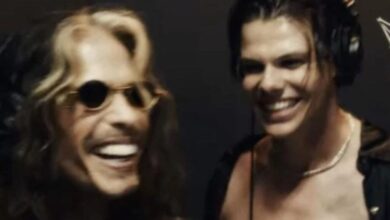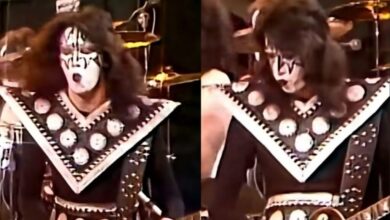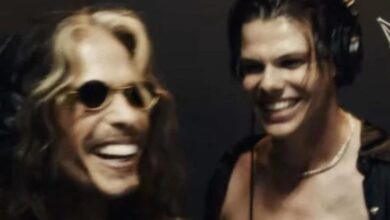When Three Comedy Legends Lose It… and Create Pure TV History
The magic of that iconic Carol Burnett swine-flu sketch begins the moment Tim Conway steps into the frame as Dr. Percy, moving with those unpredictable jolts that made him one of television’s most unpredictable forces. It’s a kind of physical comedy that looks simple on the surface, yet every twitch, every stiff turn of his shoulders, feels perfectly timed. Audiences watching decades later can still sense the precision beneath the silliness, like a musician hitting off-beat notes with flawless rhythm. It sets the tone instantly, making it clear that whatever happens next, it certainly won’t be ordinary.
As Conway continues his entrance, the real humor comes from how seriously he plays the absurdity. The banana peel dangling from his mouth isn’t just a prop — it’s part of the character’s entire worldview, and he treats it as casually as someone holding a cup of coffee. This commitment to the bit is what made Tim such a master; he never telegraphed the joke. Instead, he let the situation unravel naturally, creating a kind of comedic realism so convincing that the audience couldn’t help but buckle over with laughter. Even the camera operators struggled to stay steady.
Harvey Korman’s presence brings a completely different energy — a tension you can practically feel through the screen. He always tried so hard to stay professional, the responsible adult in the room, the one determined to deliver his lines cleanly. But with Tim Conway standing six inches away doing the comedic equivalent of controlled demolition, Harvey’s resolve begins to crack. His lips wobble, he bites down on them fiercely, and that familiar tremor takes over his face as he tries to suppress the laugh that’s already on its way.
One of the purest joys of the sketch is watching Harvey attempt the impossible task of maintaining composure. His eyes dart downward, desperately avoiding Tim’s face, but Conway’s presence is an unstoppable gravitational pull. The harder Harvey fights, the stronger the laughter builds — that shaking, helpless giggle he became famous for. It’s the very essence of corpsing: not just breaking character, but surrendering entirely to the chaos created by your scene partner. And audiences adored him for it because his laughter gave them permission to lose it, too.
Carol Burnett, ever the anchor of the show, brings her own brand of grounded chaos. She tries to keep her character steady, shoulders squared, hands neatly folded, projecting the confidence of someone who believes she can endure whatever Conway throws at her. But even she knows she is standing on thin ice. Her eyes flick to Tim with that half-warning, half-pleading expression, silently begging him not to go any further — an appeal he, of course, ignores instantly.
As the sketch unfolds, Carol’s composure becomes its own subplot. Every muscle in her face strains against the urge to laugh, and you can see the tiny twitches at the corners of her mouth betraying her struggle. It’s not just an actress trying not to laugh; it’s a woman holding back a tidal wave of joy, knowing that the slightest slip will unleash the kind of laughter that will echo backstage for days. This tension injects a delicious suspense into the scene, making viewers lean in even closer, waiting for the inevitable collapse.
Then comes the moment Conway unleashes one more strange, spasmic movement — so perfectly random, so perfectly bizarre — that Carol’s self-control shatters. Her lips curl upward first, then her shoulders begin to shake, and finally the laughter bursts free with that unmistakable Carol Burnett honesty. It’s not a polished TV laugh. It’s the real thing, born from genuine surprise and sheer delight. In that instant, the sketch transcends comedy and becomes a living snapshot of joy.
Tim Conway’s brilliance wasn’t just in the things he did, but in the things he didn’t do. He rarely explained his jokes or rushed his delivery. Instead, he allowed silence to sit, to breathe, to become awkward enough that the audience couldn’t stand it any longer. That style is on full display here. He embraces stillness, then punctuates it with the sudden, unpredictable absurdity of a man who seems powered by invisible electrical surges. The unpredictability keeps everyone — even the cast — off balance.
Meanwhile, Harvey’s laughter becomes almost musical. It rises, falls, and cracks at the edges in a way that feels entirely uncontainable. His shoulders bounce like he’s trying to shake the laughter out of his body, only to have it roar back twice as strong. This involuntary reaction shows why he and Tim were such a perfect comedy duo. Tim created the spark, but Harvey provided the explosion, making every joke feel larger, louder, and brighter than it would have been alone.
Carol’s final descent into laughter becomes the emotional release the sketch has been building toward. Her eyes close, her head drops forward, and for a moment she becomes less a performer and more a person unable to resist the contagious energy swirling around her. This vulnerability — the willingness to break, to be human — is what made the show timeless. It didn’t hide the messiness of live performance; it celebrated it.
As the scene pushes forward, the three of them become less concerned with finishing the script and more invested in surviving the moment. Dialogue becomes secondary. Physical reactions, improvisation, and sheer chemistry take over. The sketch transforms into something unscripted and alive, a reminder that the best comedy often comes from letting go of control and letting chaos steer the ship. And these three legends knew exactly how to navigate that chaos.
The laughter from the actors spills into the audience like water over a dam. Their reactions feed off each other — a symphony of giggles, cackles, and applause that turns the studio into a shared celebration. It’s communal humor, the kind that binds everyone in the room together for a few unforgettable minutes. This mutual delight is why the Carol Burnett Show remains cherished across generations.
Rewatching the sketch today, it becomes clear why it continues to resurface again and again across the internet. Modern audiences, accustomed to perfectly edited shows, find something refreshing in the rawness of it. There’s an authenticity that can’t be manufactured: three people genuinely losing control, unfiltered and unafraid of imperfection. It reminds viewers of a time when live TV embraced spontaneity rather than shying away from it.
The sketch also stands as a masterclass in comedic chemistry. Conway, Korman, and Burnett understood each other’s rhythms instinctively, bouncing from moment to moment with a trust that only years of collaboration could forge. They didn’t just act together; they reacted together, improvising in harmony. This synergy is what elevates the sketch from a funny moment to a timeless piece of comedic history.
In the end, what makes the swine-flu sketch unforgettable isn’t the plot or the punchlines. It’s the simple joy of witnessing three comedy legends trying — and failing — to keep a straight face. That failure becomes the entire charm. It captures the unpredictable beauty of live performance, where mistakes turn into magic and laughter becomes the glue holding it all together. It’s messy, spontaneous, wonderfully human, and proof that sometimes the most cherished moments in entertainment are the ones nobody planned.





